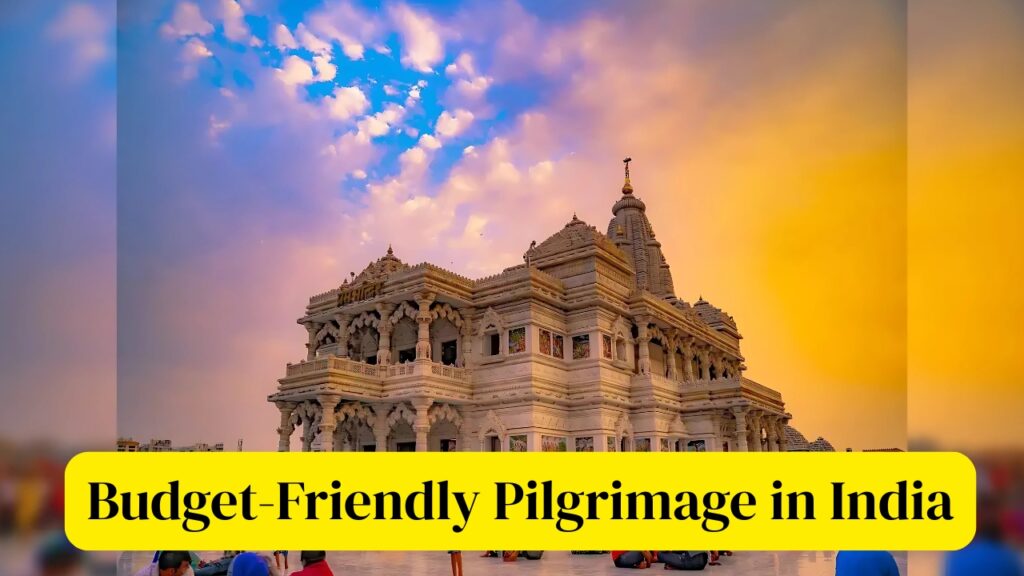India is a land of faith, spirituality, and timeless devotion. From the snow-covered temples in the Himalayas to the serene coastal shrines in the South, the country offers countless pilgrimage routes for seekers and devotees. But undertaking a pilgrimage doesn’t always have to be expensive. With careful planning and practical choices, you can experience a soul-enriching spiritual journey without putting pressure on your finances.
Whether you’re traveling solo, with elders, or as a family, this guide will help you understand how to do a budget-friendly pilgrimage in India while still enjoying the blessings, beauty, and peace that come with it.
Choose Your Destination Wisely
The first step is to identify a pilgrimage destination that aligns with your spiritual goals, time availability, and budget. Fortunately, India offers a range of affordable yet powerful spiritual locations.
Some cost-effective options include:
- Varanasi (Kashi Vishwanath) – Offers low-cost stays, food, and spiritual experiences
- Rishikesh and Haridwar – Easily accessible and filled with free spiritual activities like Ganga Aarti
- Tirupati (Balaji Temple) – Has a well-organized system of budget-friendly accommodations
- Vaishno Devi, Jammu – Trekking-based pilgrimage with affordable facilities for all
- Shirdi (Sai Baba Temple) – Offers free meals and economical lodging by the temple trust
Avoid expensive touristy spots and choose places with good connectivity and low entry costs.
Travel Smart: Transportation Tips
Traveling takes up a major portion of the budget, but with smart planning, you can save a lot.
- Trains over Flights: Book train tickets in advance through IRCTC. Use sleeper or 3AC class for long journeys to balance comfort and cost.
- General Compartments: For very short distances or unreserved trips, general coaches work well if you can manage crowds.
- Buses for Local Travel: State-run buses are much cheaper than cabs or private buses. They are ideal for temple hopping in a region.
- Travel in Groups: Pilgrimage is often best enjoyed with family or friends. Traveling in a group can help reduce per-person costs for taxis, guides, and rooms.
- Avoid Peak Season: If possible, avoid festival times to cut costs on transport and stay.
Budget Accommodation Options
You don’t need fancy hotels when your goal is spiritual fulfillment. India has a wide network of affordable stays near temples and holy places.
- Dharamshalas: These are simple rest houses managed by temple trusts or communities. Prices range from ₹100 to ₹500 per night.
- Ashrams: Many spiritual centers and ashrams provide clean and quiet accommodations for spiritual seekers. Charges are minimal and often include food.
- Budget Hotels and Hostels: Use trusted platforms like OYO, Booking.com, or MakeMyTrip to find clean budget stays.
- Temple Guest Houses: Large temples often provide their own lodges at nominal rates. Booking in advance is recommended during the pilgrimage season.
Always read reviews or call the place before booking, especially if traveling with senior citizens or children.
Eat Local and Simple
Food expenses can quickly add up if you rely on restaurants throughout your journey. Fortunately, spiritual destinations often offer wholesome, hygienic, and affordable food.
- Temple Langars and Annadanam: Many temples, especially in South India and Sikh Gurudwaras, offer free or donation-based meals.
- Ashram Kitchens: Meals in ashrams are simple, sattvic (pure), and often included in the stay charges.
- Local Eateries: Try local vegetarian food instead of packaged snacks or expensive cafes. Meals in smaller cities can cost as little as ₹50 per person.
- Carry Snacks: Dry fruits, biscuits, energy bars, and fruits help you manage hunger during long waits or travel stretches.
Avoid overindulging or eating from unknown roadside stalls to maintain health and energy during the trip.
Pack Light but Smart
Carrying the right essentials can save you money, effort, and medical emergencies.
Important items to pack:
- Comfortable walking shoes or slippers
- Water bottles (refill at temples or safe sources)
- Basic medicines, especially for elders
- Reusable bags and a small towel
- Light woolens or rain gear depending on the season
- A small pooja kit if you plan to perform rituals
Avoid carrying valuables or unnecessary electronics. Many pilgrimage places have crowded areas, and minimalism is key to spiritual focus.
Use Government Services and Temple Facilities
Many state tourism departments and temple boards provide budget travel packages, darshan tokens, and facilities for pilgrims.
Examples include:
- IRCTC Pilgrim Packages: Covers major temple circuits with stay, travel, and food at low prices
- Tirumala Tirupati Devasthanams (TTD): Offers free meals, accommodation, and bus services
- Yatra Registrations: For Kedarnath, Amarnath, or Vaishno Devi, pre-registration through official sites helps you avoid costly agents
- Pilgrim Canteens: Most temples run low-cost dining halls or bhojanalayas
Always prefer government-authorized services over private touts or agents to save money and avoid fraud.
Plan Your Itinerary in Advance
Poor planning can lead to unnecessary spending. Create a basic travel plan that includes:
- Dates of temple darshan and travel
- Daily budget limits
- Advance bookings for stay and tickets
- Alternative routes or low-cost options
- List of temples, activities, or places to explore
Use apps like Google Maps, Indian Railways, and temple websites to plan efficiently. If you’re tech-savvy, create a spreadsheet with all estimated costs.
Combine Spirituality with Nature or Culture
While the focus of the trip is spiritual, you can enhance the experience by exploring nearby natural spots or cultural landmarks—many of which are free or inexpensive.
For example:
- In Rishikesh, combine temple visits with river meditation and yoga
- In Tamil Nadu, explore ancient architecture and local dance performances
- In Odisha, combine Jagannath Puri darshan with a visit to Konark Sun Temple
Such experiences add depth and joy to your journey without affecting your budget.
Embrace the Spirit of the Yatra
Ultimately, a pilgrimage is not about luxury or leisure. It is about humility, simplicity, devotion, and inner peace. Keeping your expectations grounded helps you embrace the experience wholeheartedly.
A few tips to stay in the right spirit:
- Be patient with queues and crowds
- Help fellow pilgrims when possible
- Follow temple rules and local customs
- Keep a journal or reflect on your thoughts daily
- Focus on seva (service) and gratitude rather than sightseeing
Even the smallest darshan or prayer made with a pure heart can be more fulfilling than the grandest rituals done without emotion.
Conclusion
A spiritual journey in India doesn’t have to be expensive. With thoughtful planning, conscious choices, and a humble attitude, you can undertake a beautiful, budget-friendly pilgrimage that brings inner peace and lasting memories. From simple meals in temple canteens to resting in dharamshalas, the entire experience teaches us the joy of simplicity and surrender.
Whether you are young or old, solo or with family, the path of devotion is always open—welcoming, enriching, and wonderfully affordable.


